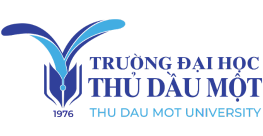References
A. Kwaghger and J. S. Ibrahim(2013). Optimization of Conditions for the Preparation of Activated Carbon from Mango Nuts using HCl. American Journal of Engineering Research, pp. 74 – 85.
B. H. Hameed and A.A. Ahmad (2009). Batch adsorption of methylene blue from aqueous solution by garlic peel, an agricultural waste biomass. Journal of Hazardous Materials, vol. 164, pp. 870 - 875.
Ministry of Agriculture and Rural Development (2015). Macadamia - current status and development orientation. ed 20-23.
C. A. Toles, W. E. Marshall and M. M. Johns(1998). Phosphoric acid activation of nutshells formetals and organic remediation: process optimization. Journal of Chemical Technology and Biotechnology, 72, pp. 255-263.
D. Kavitha and C. Namasivayam(2007). Experimental and kinetic studies on methylene blue adsorption by coir pith carbon. Bioresource Technology, vol. 98, pp. 14 – 21.
Dao Minh Trung and Nguyen Thi Thanh Tram Thu Dau Mot University(2019). A survey on MB color treatment by using activated carbon with K2CO3. Journal of Research on Natural Resources and Environment Exchange
I. Okman, S. Karagoz, T. Tay and M. Erdem (2014). Activated carbons from grape seeds by chemical activation with potassium carbonate and potassium hydroxide. Applied Surface Science, vol 293, pp. 138 – 142.
Lê Huy Du và cộng sự (1981). Nghiên cứu than hoạt tính ép viên dùng trong mặt nạ phòng độc. Báo cáo hội nghị hoá học toàn quốc lần thứ nhất Hà Nội.
M. Minamisawa, H. Minamisawa, S. Yoshida and N. Takai(2004). Adsorption behavior of heavy metals on biomaterials. Journal of Agricultural and Food Chemistry, vol. 52, pp. 5606 – 5611
M. Kamib, A. Kabbani, H. Holail and Z. Olama(2014). Heavy metals removal using activated carbon, silica and silica activated carbon composite. Energy Procedia, vol. 50, 113 – 120.
M. Kobya(2004). Removal of Cr (VI) from aqueous solutions by adsorption onto hazelnut shellactivated carbon: kinetic and equilibrium studies. Bioresource technology, 91,pp. 317-321.
M u 2008) Removal of copper (II) and lead (II) ions from aqueous solutions by adsorption on activated carbon from a new precursor hazelnut husks.
M. T. Uddin, Md. A. Islam, S. Mahmud, and Md. Rukanuzzaman(2009). Adsorptive removal of methylene blue by tea waste. Journal of Hazardous Materials, vol. 164, pp. 53 - 60.
M. MadhavaRao, G.P. Chandra Rao, K. Seshaiah, N.V. Choudary, M.C. Wang (2008). Activated carbon from Ceiba pentandra hulls, an agricultural waste, as an adsorbent in the removal of lead and zinc from aqueous solutions. Waste Management, 28(5), 849-858.
R. Malik, D. S. Ramteke and S. R. Wate (2007). Adsorption of malachite green on groundnut shell waste based powdered activated carbon. Waste Management, vol. 27, pp. 1129 – 1138.
Supaporn Douglas, uwassa Pongampha Suwassa Pongamphai, Supanee Lerdtrailuck, SiriratPonin, SujitraPolchai, AcharapornKaewchana and BudsarinOsataworanun, (2006):
W. M. A. W. Daud and W. S. W. Ali(2004). Comparison on pore development of activated carbon produced from palm shell and coconut shell. Bioresource Technology, 93, pp. 63-69.
Trinh Van Dung et al. (2011). Technology of producing activated carbon from rice husks.
Scientific and Technological Conference.
Yan-Juan Z., X. Zhen-Jiao, D. Zheng-Kang, L. Meng, and W. Yin(2014). Effects of steam activation on the pore structure and surface chemistry of activated carbon derive from bamboo waste. Applied Surface Science, 315, pp. 279-286.























